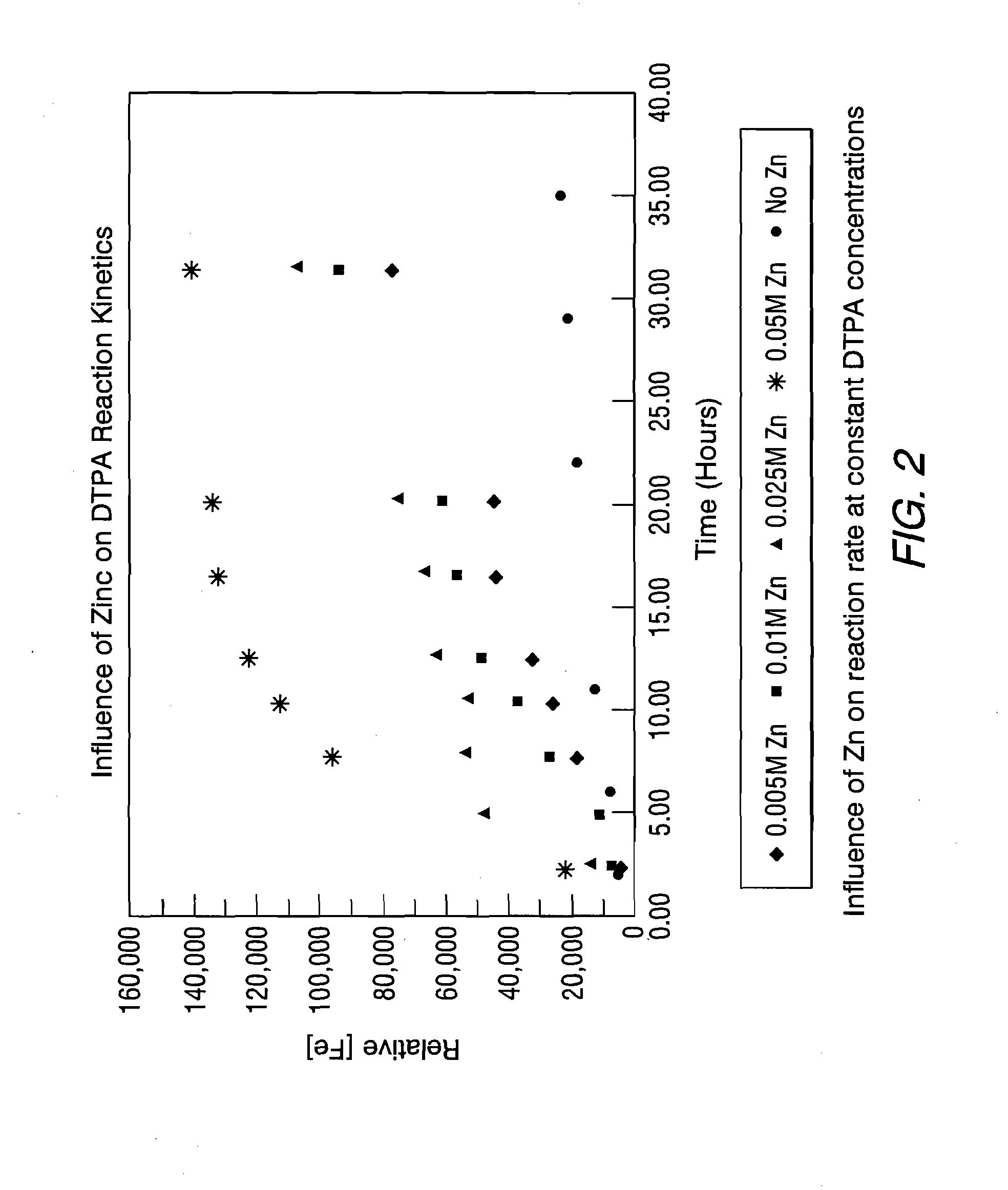Additives for heat exchanger deposit removal in a wet layup condition
a technology of additives and heat exchangers, applied in the nature of treatment water, water treatment compounds, detergent compounding agents, etc., can solve the problems of slow deposit removal rate, affecting the structural integrity of pressure boundary and structural materials, and adversely affecting the operation performance and integrity of steam generators
- Summary
- Abstract
- Description
- Claims
- Application Information
AI Technical Summary
Benefits of technology
Problems solved by technology
Method used
Image
Examples
example 1
[0035]Testing occurred in ambient laboratory conditions ranging from approximately 65° F. to approximately 75° F. with corresponding solution temperatures measured and recorded using a calibrated infrared thermometer. Initial baseline testing was performed on a variety of complexing agents neutralized from their acid form including (ethylenediaminetetraacetic acid (EDTA), diethylenetriaminepentaacetic acid (DTPA), gluconic acid, glucoheptonic acid, pyridinedicarboxylic acid (PCDA), iminodiacetic acid (IDA), ethylenediaminedisuccinic acid (EDDS)) at three separate concentrations (0.5 weight %, 1.0 weight %, and 2.0 weight %) to determine their respective reaction rates under wet layup conditions. Each sample was prepared in a solution with a pH above 9.8 and with 300 ppm to 400 ppm of carbohydrazide. All solutions were brought to the appropriate pH with 1 ml of ethanolamine and final adjusted with ammonium hydroxide. The pH of each solution was recorded. Test volumes were 250 ml with...
example 2
[0036]These tests were conducted with DTPA and EDTA and were performed under the same volume, pH, oxygen scavenger, temperature (−67° F.) and magnetite concentrations as used in Example 1. Because of the low iron concentrations in the Example 1 test phase, the iron test method was switched to inductively coupled plasma optical emission spectroscopy (ICP-OES). These tests included samples with and without the addition of the known reducing agents, citric acid and ascorbic acid, at 0.1 weight percent (individually and in combination) in conjunction with the carbohydrazide already present in the wet layup solution. In addition, various concentrations (0.005 M to 0.05 M) of neutralized ferrous ion were added to the solution to determine the influence of the ferrous ion on the magnetite / complexing agent reaction kinetics. Samples were pulled and the time was recorded approximately every two hours in the initial 12 hours of testing and every 4 hours thereafter. Each sample size was approx...
PUM
 Login to View More
Login to View More Abstract
Description
Claims
Application Information
 Login to View More
Login to View More - R&D
- Intellectual Property
- Life Sciences
- Materials
- Tech Scout
- Unparalleled Data Quality
- Higher Quality Content
- 60% Fewer Hallucinations
Browse by: Latest US Patents, China's latest patents, Technical Efficacy Thesaurus, Application Domain, Technology Topic, Popular Technical Reports.
© 2025 PatSnap. All rights reserved.Legal|Privacy policy|Modern Slavery Act Transparency Statement|Sitemap|About US| Contact US: help@patsnap.com


